Industry 4.0 refers to the fourth industrial revolution, and within the pharmaceutical industry, there is a specific term called Pharma 4.0. It involves the utilization of advanced technologies like Artificial Intelligence (AI), Internet of Things (IoT), and Big Data Analytics to enhance and optimize the manufacturing processes in the pharmaceutical industry.
The main objective of Pharma 4.0 is to increase efficiency, productivity, and responsiveness in the pharmaceutical industry, allowing it to adapt effectively to the constantly evolving market demands. In this blog post, we will delve into the various aspects of Pharma 4.0 and explore its transformative impact on the pharmaceutical manufacturing industry.
Figure 1 – The Industrial Revolutions (Source: Christoph Roser, AllAboutLean.com) – Looking back over the past few hundred years, there are 4 readily identified industrial revolutions, and each resulted in productivity gains that drove down product costs and increased demand for many different products and services.
Overview of Pharma 4.0
Pharma 4.0 is a term to describe the integration of advanced digital technologies in the pharmaceutical industry. Pharma 4.0 will leverage technology like more connectivity, increased productivity, simplified compliance, and the ability to leverage production information, to enhance the efficiency and effectiveness of the manufacturing process, leading to the production of high-quality drugs in a shorter time frame. This revolution is based on the principles of Industry 4.0, which focuses on the digitization of industrial processes to increase productivity and efficiency.
The difference between Industry 4.0 and Pharma 4.0
The primary distinction between Pharma 4.0 and Industry 4.0 lies in the emphasis placed on data and analytics within the pharmaceutical sector. In Pharma 4.0, data is gathered from all stages of the manufacturing process and subsequently analyzed to enhance quality control, streamline production, and minimize costs.
Pharma 4.0 recognizes and addresses the specific regulatory compliance requirements of the pharmaceutical industry. For instance, it incorporates the principle of “data integrity by design,” which ensures that data is collected and stored in a manner that satisfies all regulatory standards and obligations.
Key Components of Pharma 4.0
Pharma 4.0 leverages various advanced technologies to improve the manufacturing process. These include:
Internet of Things (IoT)
The Internet of Things describes devices that are embedded with sensors, software, and other technologies for the purpose of connecting and exchanging data with other devices, these devices are used to monitor and control various aspects of the manufacturing process, such as temperature, humidity, and pressure. This data is collected in real-time, and AI algorithms are used to analyze the data to detect potential issues before they become problems.
Artificial Intelligence (AI)
AI algorithms are used to analyze the data collected by IoT devices and other sources to identify patterns and trends. These insights are used to optimize the manufacturing process and improve the quality of the final product.
Big Data Analytics
Due to automatization and digitalization, a large amount of data was gathered during the processes in Pharma 4.0. To accommodate this increase in data, data storage capacities will have to be increased. Big data analytics is used to process and analyze these large amounts of data to extract insights that can be used to optimize the manufacturing process.
Robotics and Automation
Robotics and automation are used to streamline the manufacturing process and reduce the need for human intervention. This reduces the risk of errors and improves the efficiency of the manufacturing process.
Cloud storage
Cloud storage enables pharmaceutical companies to store and manage various types of data, including clinical trial data, genomic data, patient data, manufacturing data, and supply chain data. The data can be accessed and analyzed in real-time using any authorized device with an internet connection. Cloud storage in Pharma 4.0 is typically secured using a combination of encryption, access controls, and other security measures to protect the data from unauthorized access or breaches.
Blockchain
In Pharma 4.0, blockchain is seen as a key enabler for improving drug safety, reducing counterfeiting and fraud, enhancing supply chain efficiency, and ensuring regulatory compliance. These improvements are achieved through some of the blockchain strengths:
- Veracity (transactions are certified by an immense network of computers),
- Transparency (transactions are publicly accessible, like public acts drawn up by a notary),
- Independence (through decentralization no one exercises a power able to influence or modify the transactions recorded therein),
- and Security (data recorded on the blockchain is protected by advanced cryptography systems and cannot be lost due to its redundancy)
Remote communication technologies
Remote communication technologies, such as teleconferencing, videoconferencing, and virtual collaboration tools, are essential components of Pharma 4.0. These technologies enable pharmaceutical companies to connect with stakeholders across the value chain, from researchers and clinicians to patients and regulators, in real time and from anywhere in the world.

Figure 2 – Remote communication technologies
Benefits of Pharma 4.0
Pharma 4.0 offers several benefits to the pharmaceutical manufacturing industry. These include:
Improved manufacturing efficiency
Pharma 4.0 technologies enable real-time monitoring of manufacturing processes, allowing for quick identification and resolution of issues. This reduces downtime and increases production efficiency.
Enhanced quality control
With the use of advanced analytics and machine learning, Pharma 4.0 technologies can identify quality issues early in the manufacturing process. This helps reduce product defects and ensures consistent product quality.
Personalized medicine
Pharma 4.0 technologies enable the collection and analysis of vast amounts of patient data, which can be used to develop personalized treatments tailored to individual patients’ needs.
Improved supply chain management
Pharma 4.0 technologies enable real-time monitoring of the supply chain, allowing for better tracking and management of inventory and distribution. An example of an improved supply chain or blockchain would be a drug that through the use of RFID or NFC devices integrated into the primary packaging, can be followed step by step in its path from the manufacturing company to its destination, and each step would be recorded in an immutable way in the blockchain so that no counterfeit is possible, even if the secondary packaging, should be replicated.
Increased patient safety
By enabling the development of more personalized treatments and ensuring consistent product quality, Pharma 4.0 technologies can help improve patient safety.
Faster time to market
With the use of advanced analytics and machine learning, Pharma 4.0 technologies can help accelerate the drug discovery and development process, reducing time to market for new treatments.
Challenges of Pharma 4.0
Pharma 4.0 is not without its challenges. The primary challenge is the need for significant investment in advanced technologies, which can be costly. Additionally, the implementation of Pharma 4.0 requires significant changes to the organizational structure and culture of pharmaceutical companies, which can be difficult to achieve. Further challenges for Pharma 4.0 include:
Regulatory compliance
Pharma 4.0 technologies involve the use of advanced systems and software, and regulators need to ensure that they meet the required standards. Ensuring compliance with regulatory requirements is a significant challenge that pharma companies must address.
Data privacy and security
With the increasing use of data analytics, artificial intelligence, and other advanced technologies, the pharma industry is generating vast amounts of data. However, ensuring data privacy and security is a major challenge, as the data is often sensitive and subject to regulatory scrutiny.
Integration of legacy systems
Many pharma companies still rely on outdated systems that cannot easily integrate with new digital technologies. Integrating legacy systems with modern digital technologies is a significant challenge that requires careful planning and execution.
Talent acquisition and retention
Pharma 4.0 requires a new set of skills, including data analytics, artificial intelligence, and machine learning. Attracting and retaining top talent with these skills is a significant challenge for pharma companies.
Cost
Implementing Pharma 4.0 technologies requires a significant investment in infrastructure, software, and talent. Cost is a significant challenge for smaller pharma companies or those with limited resources.
Intellectual property protection
With the increasing use of digital technologies in pharma, there is a growing concern over the protection of intellectual property. Ensuring that intellectual property is adequately protected is a significant challenge that requires ongoing attention. Patents can be applied for when it comes to the algorithms of AI systems or the hardware components that enable them to function. Where copyright law could be applied to cover the output of such a system.
Conclusion: where are you in the Pharma 4.0 transition
Pharma 4.0 represents a significant opportunity for the pharmaceutical manufacturing industry to improve efficiency, quality, and responsiveness. By leveraging advanced technologies such as AI, IoT, and Big Data Analytics, pharmaceutical manufacturers can optimize their manufacturing processes and produce high-quality drugs in a shorter time frame while maintaining regulatory compliance.
While there are challenges to implementing Pharma 4.0, the benefits make it a compelling proposition for pharmaceutical companies looking to remain competitive in an ever-changing market.
Need help in your transition to Pharma 4.0 or do you want a partner to share your challenges? Our experts will be happy to help you! Please do not hesitate to contact us.


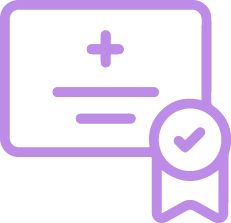

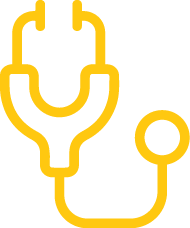
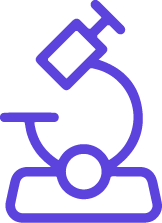
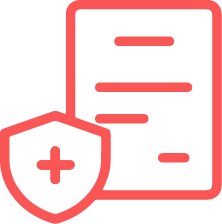
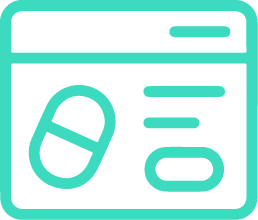




.jpg)




















.jpg)






















.png)

.jpg)